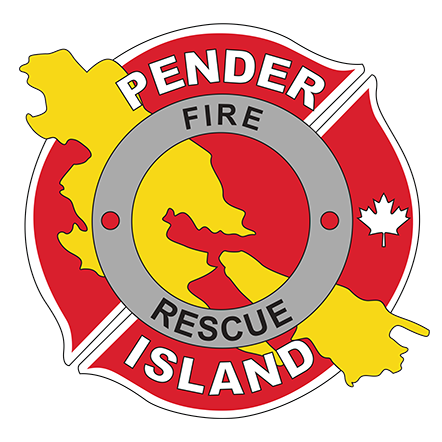

You should call the Fire Department whenever you feel that you and / or your community are in danger.
Call 911 if the danger is imminent.
Call the Fire Dispatch 1-888-574-1959 and page out the on duty Fire Officer if the danger is low.
For questions and inqueries please contact Pender Island Fire Department at:
Phone: 250-629-3321
Email: administration@penderfire.ca
YES
Residents can use their weed eaters when the weeds are green. We recommend not using metal disk blades during high and extreme fire conditions.
YES
During High and Extreme Fire Conditions special fire prevention measures may be required. We recommend if it is not a critical job, hold off haying until the fire danger decreases.
NO
As long as the excavation is being done on rock, dirt or mineral soil. Examples of acceptable excavating work could be construction sites, septic tank installation, driveway work etc. Logging and Land Clearing activities are not acceptable activities during Extreme Fire Conditions.
YES
Gas powered pressure washers may be used during High and Extreme Fire conditions. We recommend placing the device on a non - combustible surface.
YES
Gas powered leaf blower may be used during High and Extreme Fire conditions.
YES
Barrels are considered to be incinerators and require a valid permit.
Do not make such a judgment. Call 911 immediately and let the professionals weigh the gravity of your emergency and respond accordingly. Do not call the local fire department. Fire halls are not staffed by volunteers 24/7 and delays in response may result.
We have maps detailing the location of every property on North and South Pender. That said, many emergencies are at night so it is imperative that your house number be posted at the entrance to your driveway.
The numbers must be at least four inches tall, reflective and visible from both street directions.
Driveway specifications are clearly set out in CRD building regulations. There are also regulations governing curves and grades. Contact the building inspector for details.
In Magic Lake Estates there are rated fire hydrants, many within 300 metres of homes which qualifies those homeowners for insurance discounts. In areas without hydrants we bring a pumper truck to the scene and /or pump water from a nearby pond or other water source. Work is underway to develop water supplies for fire protection in areas without hydrants.
The First Responder program was established by the British Columbia government to enable faster response to medical emergencies and to fill service gaps. Studies have shown that survival rates improve and health care costs decrease as the time required to respond and initiate interventions decreases. Faster response equals better results.
We work closely with the crew at BCAS to give residence the best service possible.
There are three levels of governance for fire rescue services on Pender Island - Pender Island Fire Rescue (PIFR), the Pender Islands Fire Protection Society (PIFPS) and the Capital Regional District (CRD).
PIFR is managed by our Fire Chief, who is responsible for day to day operations, and to ensure that the right resources are available and capable to respond to calls in accordance with all relevant Acts and Regulations. The Fire Chief is responsible for management of the regulatory and business components necessary to provide fire and rescue services, including human resources, customer service, plus operating and capital budget management. The Chief is an employee of and accountable to the Pender Islands Fire Protection Society (PIFPS).
Pender Island Fire Rescue
4423 Bedwell Harbour Road
Pender Island, BC V0N 2M1
Canada
Phone: 250-629-3321
Email: administration@penderfire.ca
© Pender Island Fire Rescue 2024
Website design, programming and home page photo by Sergei Petrov